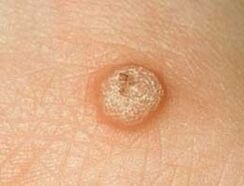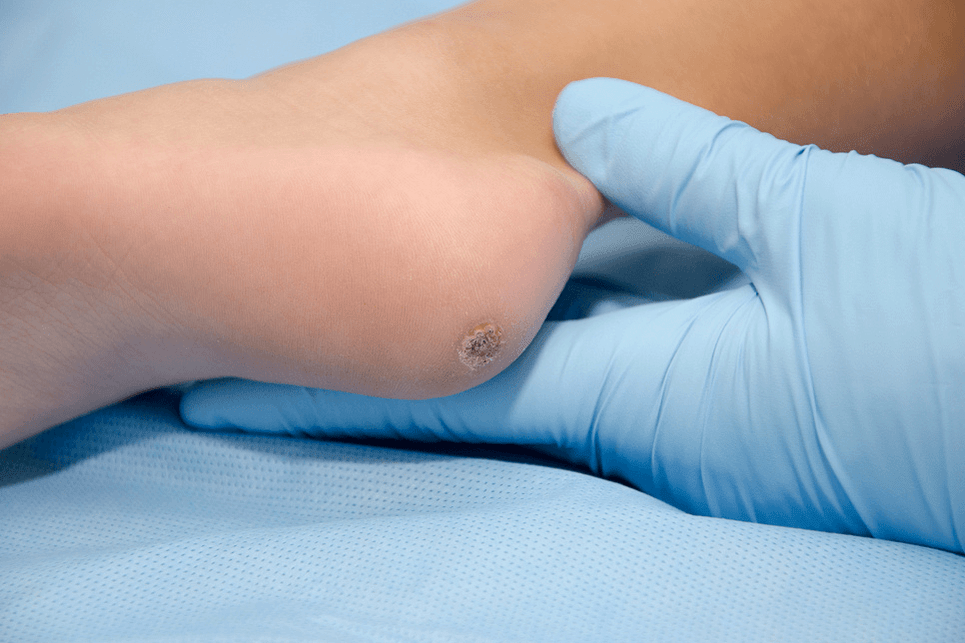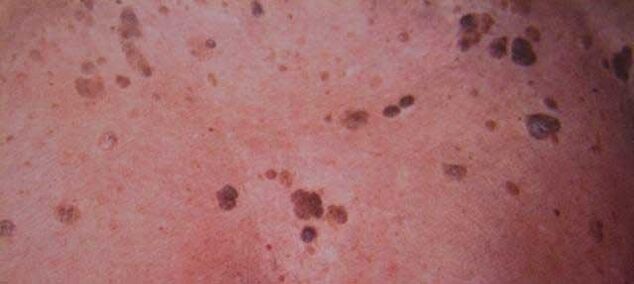Warts are benign (malignant - without the formation of cancer cells) skin formation, which occurs under the influence of various members of the family of human papillomavirus (HPV), which is more than a hundred. There are no gender or age barriers for warts: their distribution is the same between both sexes and does not depend on age.
Ways of infection and causes of warts

Papillomavirus is transmitted by contact: either by direct contact with the carrier (handshake), or through contaminated household items and the environment (bath, shower, pool, etc. ). But do not be afraid of the hand of a colleague or a good friend: the conditions of infection are an unfavorable combination of a number of factors:
- skin cracks and microtraumas, chronic scratches. Risk group - people engaged in wet cleaning or hand washing due to the nature of their professional activity: they have many microtraumas on the skin;
- weak immunity (indicator - frequent colds);
- excessive sweating of hands and feet.
If everything goes wrong, the first wart will appear in 1, 5-6 months: this is the incubation period of a viral infection caused by HPV.
Types and symptoms of warts
Ordinary (also called vulgar) warts
Such warts make up 2/3 of the total number of warts on the skin. Similarly, these warts are characterized by age reading: they often settle in children and young students.
The favorite place for warts to appear is the hands (both palms and backs), fingers, and sometimes the face (which is very unpleasant from an aesthetic point of view). The appearance of a vulgar wart is very unpretentious: a round seal-nodule, the size of which varies from the head of the pin to a small pea. The color of the skin is not selected. Single warts are rare: they usually have several or whole rashes. Moreover, one of the warts is the largest, it is the so-called mother wart. If you remove it, the rest will fall by itself.
Straight (juvenile) warts

Another representative of "young" warts that affect people between the ages of 10 and 25. They are small flat papules with a smooth (sometimes scaly) surface that is only slightly different on the surface of the skin. The color is fleshy, sometimes yellowish. Straight warts often occur on the back of the hands, wrists, face and neck. Sometimes - at the beginning of the penis.
plantar warts

These warts are characterized by an increase in pain, especially when walking. Externally, plantar warts are difficult to distinguish from calluses. They can be convex or concave. Plantar warts open according to their names - in the soles, where there is the most friction.
Seborrheic warts

Epithelial benign tumors that develop over the years and develop in old age are called aging warts. At first it is a small brown spot, it grows over time and reaches a diameter of 5-6 cm. Aging warts (also called seborrheic keratomas) have an oily, crusty surface. It thickens over time, covers the surface with cracks and is literally filled with dark brown. Age warts occur in closed areas of the body, but sometimes unknowingly irritate the owner on the face, neck and extremities.
Condylomata (genital warts)
These warts have a specific localization: the genitals, perineum, vaginal opening and anus. They can occur in the armpits, under a woman's breasts, and in children - in the nasolabial folds. In appearance, the lobed structure is often compared to a cockroach or cauliflower. The color of the warts is fleshy or pale pink, but if you rub them, they turn red and begin to bleed. They form large colonies.
Diagnosis of warts
Diagnosis of warts is not difficult, this is not rocket technology for you. Just look at the clinical manifestations of these undesirable growths. Plantar warts are distinguished by the papillary structure of the first of the banal calluses, from the warts of the genital warts, which are a sign of secondary syphilis, with a denser consistency, a broad base and a moist surface.
Treatment of warts
Warts are removed either medically or mechanically. Given their viral "essence", they fight accordingly: antiviral ointments are prescribed. This will prevent the spread of warts to underdeveloped areas. From folk methods, celandine milky juice, distinguished by cutting the plant, is widespread.
Electrocoagulation (exposure to electric current + high temperature) helps to get rid of such warts in the most advanced cases.
Cryotherapy (cryodestruction with liquid nitrogen) is very suitable for the treatment of vulgar warts. This procedure is practically painless, which makes it easier to use in children.
Plantar warts are treated in a complex way: first - by cryodestruction, then - surgically, removing the affected tissue area under local anesthesia.
Laser therapy using different types of rays is also used. Evaporation or coagulation of the affected area depends on this.
There are usually no specific problems with warts, but relapses do occur. And in about half of the cases, they go away on their own without any treatment.
As a preventative measure, it may even be advisable to react immediately to the appearance of a wart and take immediate action to eliminate it.























